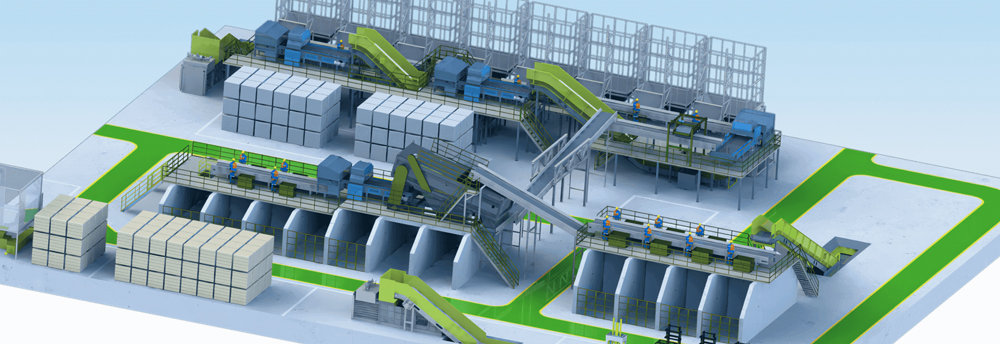 Time:2025-01-14
Time:2025-01-14
 Source:青绿环境
Source:青绿环境
From a global perspective, the application of waste sorting equipment shows a diversified trend. Different countries and regions have chosen different solutions based on their own actual situations, while also facing their respective challenges and development opportunities.

Global Application of Waste Sorting Equipment
The global waste sorting equipment market covers a variety of equipment types, including conveying systems, screening equipment, magnetic separators, baling machines, etc. These devices are widely used in different fields such as municipal solid waste, commercial and industrial waste, construction and demolition waste, and green waste.
Solutions in Different Countries or Regions
Developed Countries: In developed countries such as Europe and America, the application of waste sorting equipment is relatively mature. These countries usually adopt highly automated sorting systems, such as optical sorters and eddy current separators, to achieve high-precision material separation. For example, some European countries widely use optical sorters in the treatment of municipal solid waste to identify and separate plastics of different colors and materials. In addition, these countries also focus on optimizing the sorting process and improving the resource recovery rate through the integration of the Internet of Things (IoT) and big data technologies.
Developing Countries: In developing countries in Asia-Pacific and Latin America, the application of waste sorting equipment is gradually increasing. These countries are facing rapid urbanization and industrialization, with a continuous increase in waste production, thus there is an urgent need for efficient waste sorting equipment. For example, some developing countries have begun to use simple screening equipment and magnetic separators to separate large items and metals to improve the resource recovery rate. However, due to limitations in funds and technology, these countries still face challenges in equipment renewal and maintenance.
Challenges Faced
High Initial Investment: Advanced waste sorting equipment, especially those integrated with artificial intelligence and automation technologies, is costly. This makes it difficult for some small and medium-sized waste management facilities to afford the cost of equipment upgrades.
Insufficient Infrastructure: In some areas, especially in developing countries, the waste management infrastructure is not perfect. The lack of appropriate waste collection systems, recycling facilities, and sorting centers limits the widespread application of waste sorting equipment.
Technical Complexity: Advanced waste sorting equipment requires skilled operators and maintenance personnel. For organizations with limited technical resources, operating and maintaining such equipment may be a challenge.
Public Awareness and Acceptance: The successful implementation of waste sorting depends on public participation and awareness. Some communities may have a lower acceptance of waste sorting practices, which can affect the effectiveness of waste management work.
Development Opportunities
Technological Progress: With the integration of the Internet of Things (IoT) and big data technologies, the performance and efficiency of waste sorting equipment are expected to be further improved. IoT sensors can provide real-time data on waste composition, volume, and flow, while big data analysis can optimize resource allocation and operational efficiency.
Enhanced Environmental Awareness: The growing global concern about environmental pollution and the increasing demand for sustainable waste management are driving the development of the waste sorting equipment market. Governments, environmental organizations, and communities are all working hard to reduce waste generation, promote recycling, and reduce landfill volumes.
Resource Recovery and Circular Economy: Waste sorting equipment plays a key role in resource recovery and promoting a circular economy. By separating valuable materials such as metals, plastics, and paper from the waste stream, these devices not only conserve natural resources but also reduce dependence on raw materials and their associated environmental impacts.
The application of waste sorting equipment in different countries and regions around the world shows different characteristics and trends. Despite many challenges, with the progress of technology and the enhancement of environmental awareness, the development prospects of the waste sorting equipment market remain broad.













 Prev
Prev











